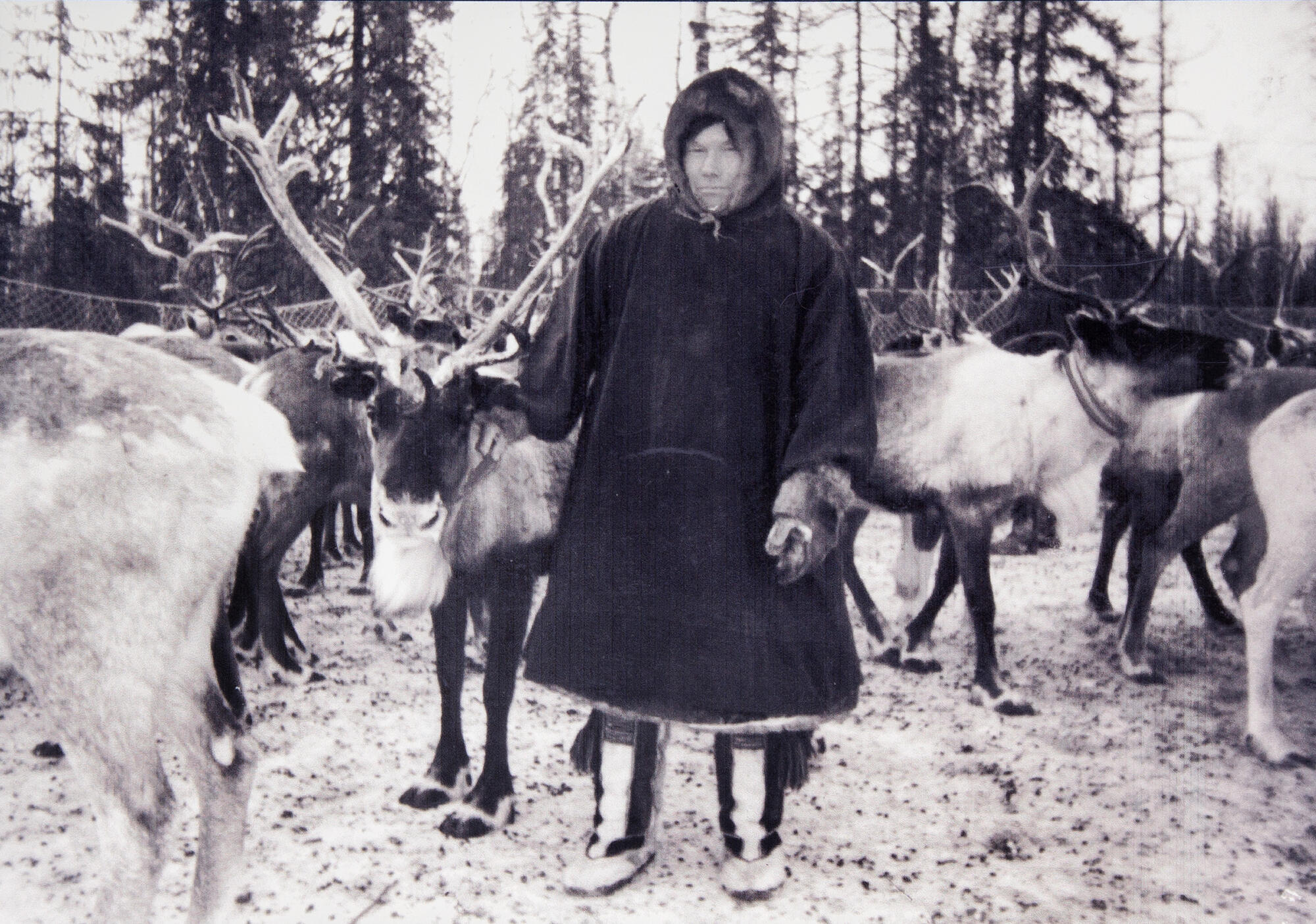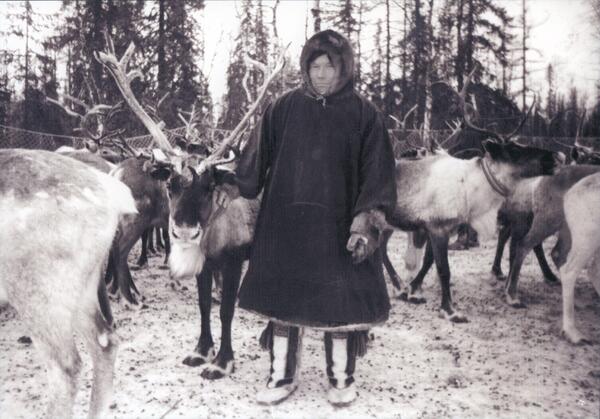Since old days, when the Nenets wanted to emphasize the well-being of a person, they said, “As far as the eye can see, there are deer everywhere, there are so many of them.” People have been hunting deer for hundreds of thousands of years, but after the domestication of animals, reindeer husbandry became the basis for the survival of most northern peoples. Translated from the Nenets language, the “deer” means “giving life”. Deer provide people with everything they need: food, clothing, and medicines, while the man wanders from place to place in search of new pastures.
In Soviet times, the development of reindeer husbandry was also influenced by the socio-economic policy of the state. In the 1990s, reindeer herders were again allowed to have their own herds. Calculations indicated that the minimum number of livestock needed for one family was 200–250 deer. If there were fewer animals, the herd inevitably dwindled, as the owner was forced to slaughter some of them.
Wealthy reindeer herders own herds consisting of 1,000–1,500 animals. The Forest Nenets rarely unite reindeer in large herds, but in summer, they rent their livestock to large reindeer herders for grazing. In this case, the family stays in place and fishes. The caught fish is shared with the shepherds, who went with the herd to the summer pastures.
Nenets reindeer breeding has always greatly depended on nature. Many animals died from injuries incurred by icy conditions, predators and wild deer, epidemics of anthrax and foot-and-mouth disease. In the summer, deer died from midges and parasite larvae, which insects deposited in the deer’s nose, under the skin and in the nasopharynx. The situation improved after the start of deer vaccination and the emergence of new drugs.
The importance of reindeer husbandry for northern peoples is difficult to overestimate. Reindeer teams are the main and often the only possible way to get around the snowy tundra. The Nenets use deer hides to sew clothes and shoes, as well as walls for a portable house — the chum. Deer provide people with food: meat, milk, fat, blood and bone marrow. Deer antlers were used for making glue, parts of harness, knife handles and medicines. Reindeer tendons are used as sewing threads, and soft skins and fur are used as baby diapers. Many northern peoples still follow the old traditional way of life.
In Soviet times, the development of reindeer husbandry was also influenced by the socio-economic policy of the state. In the 1990s, reindeer herders were again allowed to have their own herds. Calculations indicated that the minimum number of livestock needed for one family was 200–250 deer. If there were fewer animals, the herd inevitably dwindled, as the owner was forced to slaughter some of them.
Wealthy reindeer herders own herds consisting of 1,000–1,500 animals. The Forest Nenets rarely unite reindeer in large herds, but in summer, they rent their livestock to large reindeer herders for grazing. In this case, the family stays in place and fishes. The caught fish is shared with the shepherds, who went with the herd to the summer pastures.
Nenets reindeer breeding has always greatly depended on nature. Many animals died from injuries incurred by icy conditions, predators and wild deer, epidemics of anthrax and foot-and-mouth disease. In the summer, deer died from midges and parasite larvae, which insects deposited in the deer’s nose, under the skin and in the nasopharynx. The situation improved after the start of deer vaccination and the emergence of new drugs.
The importance of reindeer husbandry for northern peoples is difficult to overestimate. Reindeer teams are the main and often the only possible way to get around the snowy tundra. The Nenets use deer hides to sew clothes and shoes, as well as walls for a portable house — the chum. Deer provide people with food: meat, milk, fat, blood and bone marrow. Deer antlers were used for making glue, parts of harness, knife handles and medicines. Reindeer tendons are used as sewing threads, and soft skins and fur are used as baby diapers. Many northern peoples still follow the old traditional way of life.



